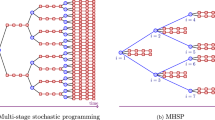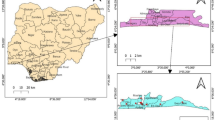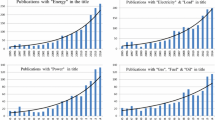Abstract
Nonlinear grey Bernoulli model, abbreviated as NGBM model, has been validly used in real applications due to its high accuracy in nonlinear time series forecasting. However, there remain technical challenges to explain the mechanism of the accumulative sum operator in nonlinear grey modelling process and estimate structural parameters independent from the initial values. This paper aims to reconstruct the modelling process of the NGBM model so as to explain the modelling mechanism better by utilizing the integral matching approach, which consists of an integral formula and the numerical discretization-based least squares. First, the integral formula is employed to investigate the accumulative sum operator and further reconstruct the NGBM model to a generalized form, referred as to INGBM model. Then, a novel parameter estimation strategy, estimating structure parameters and initial values simultaneously, is developed by utilizing the numerical discretization-based least squares approach. Next, Monte Carlo simulation studies are designed to evaluate the finite sample performance of both models. Comparisons show that the INGBM model outperforms to the original one in terms of parameter estimation accuracy, forecasting accuracy and robustness to noise. Finally, we apply the INGBM model at a coal consumption in China study to further illustrate the usefulness of this model.








Similar content being viewed by others
References
Box GE, Jenkins GM, Reinsel GC, Ljung GM (2015) Time series analysis: forecasting and control. Wiley, Hoboken
Chen CI, Chen HL, Chen SP (2008) Forecasting of foreign exchange rates of Taiwan’s major trading partners by novel nonlinear grey Bernoulli model NGBM(1,1). Commun Nonlinear Sci Numer Simul 13(6):1194–1204
Chia-Nan W (2015) An improved nonlinear grey Bernoulli model combined with Fourier series. Math Probl Eng. https://doi.org/10.1155/2015/740272
Dormand JR, Prince PJ (1980) A family of embedded Runge—Kutta formulae. J Comput Appl Math 6(1):19–26
Hill T, O’Connor M, Remus W (1996) Neural network models for time series forecasts. Manag Sci 42(7):1082–1092
Hsin PH, Chen CI (2015) Application of game theory on parameter optimization of the novel two-stage nash nonlinear grey Bernoulli model. Commun Nonlinear Sci Numer Simul 27(1–3):168–174
Hsu LC (2010) A genetic algorithm based nonlinear grey Bernoulli model for output forecasting in integrated circuit industry. Expert Syst Appl 37(6):4318–4323
Julong D (1989) Introduction to grey system theory. J Grey Syst 1(1):1–24
Kong L, Ma X (2018) Comparison study on the nonlinear parameter optimization of nonlinear grey Bernoulli model (NGBM (1,1)) between intelligent optimizers. Grey Syst Theory Appl 8(2):210–226
Li Q, Wang ZX, Zhang XY (2020) An improved gray Bernoulli model for estimating the relationship between economic growth and pollution emissions. Environ Sci Pollut Res 27(20):25638–25654
Liang H, Wu H (2008) Parameter estimation for differential equation models using a framework of measurement error in regression models. Publ Am Statal Assoc 103(484):1570–1583
Liu X, Xie N (2019) A nonlinear grey forecasting model with double shape parameters and its application. Appl Math Comput 360:203–212
Liu S, Yang Y, Forrest J (2017) Grey data analysis. Springer, Berlin
Lu J, Xie W, Zhou H, Zhang A (2016) An optimized nonlinear grey Bernoulli model and its applications. Neurocomputing 177:206–214
Ma X, Liu Z, Wang Y (2019) Application of a novel nonlinear multivariate grey Bernoulli model to predict the tourist income of China. J Comput Appl Math 347:84–94
Nocedal J, Wright S (2006) Numerical optimization. Springer, Berlin
Ramsay J, Hooker G (2017) Dynamic data analysis. Springer, Berlin
Ramsay JO, Hooker G, Campbell D, Cao JG (2007) Parameter estimation for differential equations: a generalized smoothing approach. J R Stat Soc Stat Methodol B 69:741–796
Şahin U (2021) Future of renewable energy consumption in France, Germany, Italy, Spain, Turkey and UK by 2030 using optimized fractional nonlinear grey Bernoulli model. Sustain Prod Consump 25:1–14
Şahin U, Şahin T (2020) Forecasting the cumulative number of confirmed cases of COVID-19 in Italy, UK and USA using fractional nonlinear grey Bernoulli model. Chaos Solitons Fractals 138(109):948
Seber GA, Lee AJ (2012) Linear regression analysis, vol 329. Wiley, Hoboken
Shaikh F, Ji Q, Shaikh PH, Mirjat NH, Uqaili MA (2017) Forecasting China’s natural gas demand based on optimised nonlinear grey models. Energy 140:941–951
Smola AJ, Schölkopf B (2004) A tutorial on support vector regression. Stat Comput 14(3):199–222
Tien TL (2009) A new grey prediction model FGM(1,1). Math Comput Model 49(7–8):1416–1426
Wang ZX (2013) An optimized nash nonlinear grey Bernoulli model for forecasting the main economic indices of high technology enterprises in China. Comput Ind Eng 64(3):780–787
Wang ZX (2017) A weighted non-linear grey Bernoulli model for forecasting non-linear economictime series with small data sets. Econ Comput Econ Cybern Stud Res 51(1):169–186
Wei B, Xie N, Yang Y (2019) Data-based structure selection for unified discrete grey prediction model. Expert Syst Appl 136:264–275
Wu W, Ma X, Zeng B, Wang Y, Cai W (2019a) Forecasting short-term renewable energy consumption of China using a novel fractional nonlinear grey Bernoulli model. Renew Energy 140:70–87
Wu WZ, Zhang T, Zheng C (2019b) A novel optimized nonlinear grey Bernoulli model for forecasting China’s GDP. Complexity 2019:1–10
Wu W, Ma X, Zeng B, Lv W, Wang Y, Li W (2020) A novel grey Bernoulli model for short-term natural gas consumption forecasting. Appl Math Model 84:393–404
Xiao X, Yang J, Mao S, Wen J (2017) An improved seasonal rolling grey forecasting model using a cycle truncation accumulated generating operation for traffic flow. Appl Math Model 51:386–404
Xie N, Pearman AD (2014) Forecasting energy consumption in china following instigation of an energy-saving policy. Nat Hazards 74(2):639–659
Xie N, Liu S (2009) Discrete grey forecasting model and its optimization. Appl Math Model 33(2):1173–1186
Xie W, Pu B, Pei C, Lee SJ, Kang Y (2020) A novel mutual fractional grey Bernoulli model with differential evolution algorithm and its application in education investment forecasting in China. IEEE Access 8:97839–97850
Young Peter C (2015) Refined instrumental variable estimation: maximum likelihood optimization of a unified Box–Jenkins model. Automatica 52:35–46
Zhang G, Patuwo BE, Hu MY (1998) Forecasting with artificial neural networks: the state of the art. Int J Forecast 14(1):35–62
Zhou J, Fang R, Li Y, Zhang Y, Peng B (2009) Parameter optimization of nonlinear grey Bernoulli model using particle swarm optimization. Appl Math Comput 207(2):292–299
Funding
This work was funded by National Natural Science Foundation of China (Grant No. 71671090), Joint research project of National Natural Science Foundation of China and Royal Society of UK (Grant No. 71811530338), the Fundamental Research Funds for the Central Universities (Grant No. NP2018466) and Qinglan Project for excellent youth or middle-aged academic leaders in Jiangsu Province (China).
Author information
Authors and Affiliations
Corresponding author
Ethics declarations
Conflict of interest
The authors declare that they have no conflict of interest.
Ethical approval
This article does not contain any studies with human participants or animals performed by any of the authors.
Additional information
Communicated by V. Loia.
Publisher's Note
Springer Nature remains neutral with regard to jurisdictional claims in published maps and institutional affiliations.
This work was supported by National Natural Science Foundation of China (71671090, 71871117); Joint Research Project of National Natural Science Foundation of China and Royal Society of UK (71811530338); Fundamental Research Funds for Central Universities of China (NP2018466); Qinglan Project for excellent youth or middle-aged academic leaders in Jiangsu Province, China.
Appendix
Appendix
The ode45 method, where 4 represents the fourth-order Runge-Kutta algorithm and 5 represents the fifth-order truncation error, is a variable-step numerical method to solve differential equations (Dormand and Prince 1980).
In general, the nonlinear ordinary differential equation can be written as
The main equations of fourth-order Runge–Kutta algorithm are
where h is the step size, \( k_1,~k_2,~k_3,k_4\) are the slopes at points over the interval \([t_i, t_{i+1}]\). The accuracy of ode45 is determined by the fifth-order truncation error \({\mathcal {O}}(h^5)\).
Rights and permissions
About this article
Cite this article
Yang, L., Xie, N. Integral matching-based nonlinear grey Bernoulli model for forecasting the coal consumption in China. Soft Comput 25, 5209–5223 (2021). https://doi.org/10.1007/s00500-020-05521-3
Published:
Issue Date:
DOI: https://doi.org/10.1007/s00500-020-05521-3




